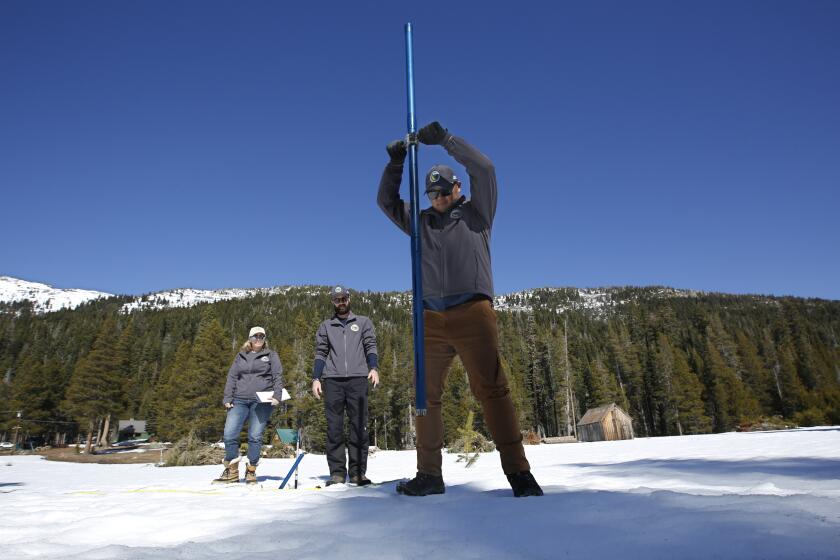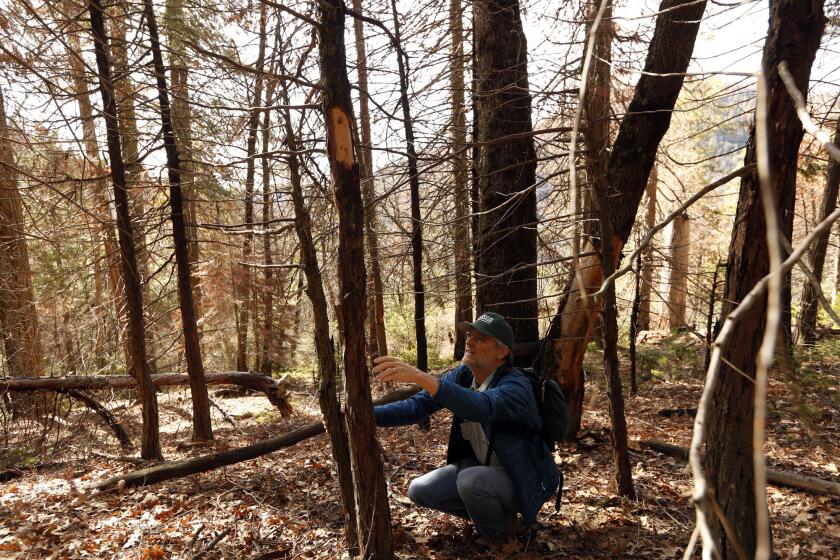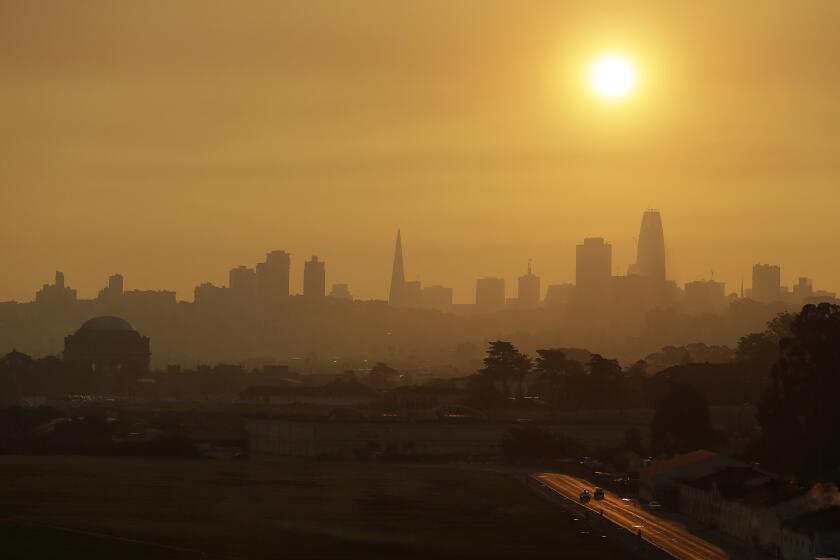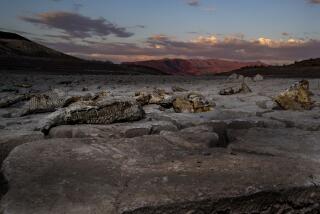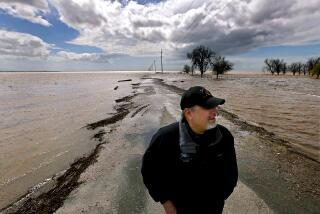Is California suffering a decades-long megadrought?
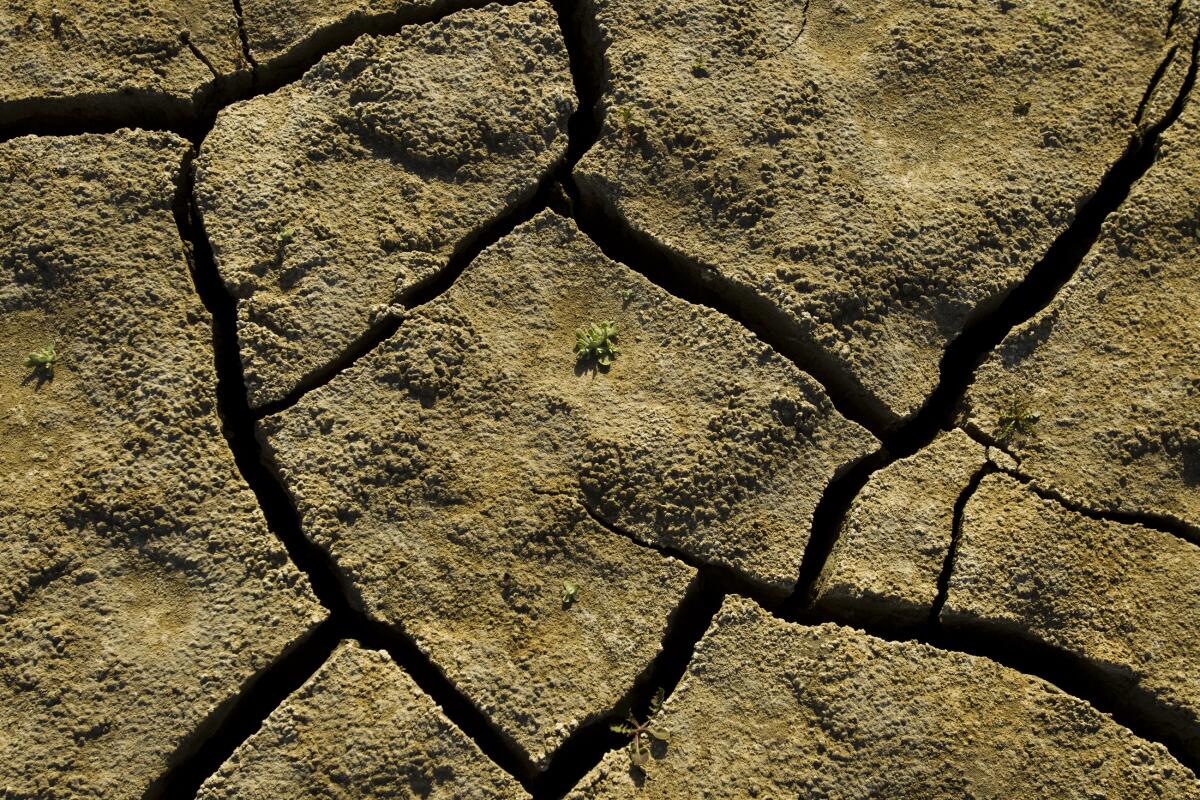
California has entered another drought.
But depending on whom you ask, the last one may have never really ended.
Some researchers believe the region is actually more than two decades into an emerging “megadrought” — a hydrological event that is on par with the worst dry spells of the last millennium. Except this time, they say, human-caused climate change is driving its severity — and will make it that much harder to climb back out of.
“If this drought was totally due to natural variability, then we would at least have the comfort of knowing at some point, good luck is very likely to show up again and this is going to end,” said Park Williams, a bioclimatologist and associate professor at UCLA.
“But the knowledge that a fair amount of this current drought is attributable to human-caused climate trends tells us that we may have not seen the worst yet.”
Record amounts of regional water storage will buffer urban Southern California from the effects of drought this year.
Williams was the lead author of a study published last year in the journal Science that analyzed ring records from thousands of trees across western North America to reconstruct soil moisture over the last 1,200 years. Their research suggested that 2000 to 2018 was the second-driest period, eclipsed only by a megadrought in the late 1500s.
“This drought that we’re in now over the last 22 years has been as severe as the worst 22-year periods of the worst megadroughts that occurred last millennium,” Williams said.
The team estimated that human-caused climate trends have accounted for about 40% of the average soil moisture deficit in the 2000s.
“To put it in plain language, that means that without human-caused climate change, the West still would have had a pretty bad drought over the last couple of decades,” Williams said. “But it wouldn’t have been nearly as severe as the drought that actually occurred.”
Other experts are more skeptical, saying that while the Colorado Basin may be facing megadrought conditions, the same can’t yet be said for California. But they agree that warming temperatures are making droughts worse and forcing the state to reckon with how it manages its water.
Seasonal droughts are typical in California, with its Mediterranean climate. Summers are usually dry, but water supplies are replenished in the winter and spring by rain and snowmelt.
Annual droughts are also nothing new. “You will have these dry years and then in between you will get these really, really wet years,” said Safeeq Khan, assistant cooperative extension specialist of water and watershed sciences at the University of California Division of Agriculture and Natural Resources. “They can be what we describe as drought busters.”
But research has indicated the wet periods are becoming more sporadic and intense, and the dry periods between them are growing longer and drier.
For instance, in 2017, record rains filled surface reservoirs that had dropped dramatically after five years of intensely dry conditions.
“From a water supply aspect, that ended the drought,” said Doug Parker, director of the California Institute for Water Resources at UC Agriculture and Natural Resources. “From an ecosystem aspect, I don’t think our forests and our natural lands that rely on rainfall ever fully recovered from that drought, and now we’re into the next one.”
The ponderosa pine had taken root decades before the Revolutionary War, making a stately stand on this western Sierra Nevada slope for some 300 years, Nate Stephenson figures.
It takes more than a year or two of adequate rainfall for plants to heal from years of being starved for moisture, Parker said, noting the dryness also left some trees vulnerable to bark beetle infestations from which they will never recover.
Groundwater supplies also take years to rebound, said Hoori Ajami, assistant professor of groundwater hydrology at UC Riverside, who is part of a team of researchers that analyzed data from wells affected by climate for a paper currently in peer review.
“Once your precipitation has recovered, that doesn’t mean your stream flow is recovered or your groundwater is recovered,” she said. “Our estimate is it could take for groundwater between three to 10 years on average to recover.”
When rain falls intermittently, over time, it’s able to be absorbed into the flood plain and aquifers and to fill surface reservoirs, all of which act as a buffer against future deficits.
“But if all that water comes in three, four or five big storms, then you run into situations like flood control, where you’re trying to push that water to the sea as quickly as possible to protect communities and property,” Khan said. “So our ability to absorb and store that rain diminishes when you have intense rainfalls.”
On top of that, the wet years sprinkled throughout the 2000s, such as 2005 and 2019, simply weren’t wet enough to make up for the long-term average moisture deficit that built up over the decades, Williams said. That supports the idea that we are in the opening chapter of a megadrought that’s been taking shape this whole time, he said.
Not all experts agree that California is in a megadrought. Jay Lund, co-director of the Center for Watershed Sciences at UC Davis, said that 2017 ended the drought for most people in most places, and we are now seeing another, discrete event, albeit one that began while the region was still hurting from the last one. He wouldn’t describe that as a megadrought.
“I think there’s some truth to that certainly for the Colorado Basin, but I think as a more pragmatic matter for California, mostly not,” he said.
And Khan cautioned against drawing conclusions based on models rather than data.
“Considering we only have observations that go back 100 years, it’s very difficult to conclude with certainty that we are in a megadrought,” Khan said. “If you just look at the annual precipitation departure, it does kind of indicate that we are heading in the direction, though.”
Experts believe the increase in variability is being driven in part by rising temperatures, with the western U.S. about 2.5 to 3 degrees warmer than it would be without human-caused climate change, Williams said. The heat has also promoted drying, accelerating evaporation from canals and lakes.
“The temperature is getting warmer and warmer, so that creates a higher atmospheric deficit,” Khan said. “Every time the plants open up for photosynthesis they’re going to lose a lot more water because it’s hot.”
The shift has begun to disrupt the balance of California’s natural water storage system. The majority of the state’s precipitation falls between November and March, much of it in the Sierra Nevada in the form of snow. The snow sits around in mountainous areas for months before it melts in the spring and summer, sustaining the forest ecosystem through its dry period and trickling down into streams and reservoirs.
But rising temperatures are causing more precipitation to fall as rain rather than snow, and what snow does accumulate is melting earlier in the year.
“For the last 50 years or so, about every decade we see about a 1% shift of runoff from the spring to the winter, which is what you’d expect to see with a warmer climate,” Lund said.
Record heat. Record acres burned. Sky-high air pollution. The extremes California has experienced in recent weeks all have one thing in common: They were made worse by climate change.
That means the water is no longer available when it’s needed most, and it strains the flood-control network during a time of year that already tends to be wetter.
Earlier snowmelt also helps prime forests for wildfires. During wet years, mountainous areas are covered with snow until June or July, leaving only a two- or three-month window for fire season before fall rains return.
“But now, the snow is already gone, and we are just entering April,” Khan said. “If we don’t get any more storms, we’re in deep trouble.”
Already, vegetation is bone-dry and soil moisture is low, which portend an active fire season in western U.S. forests, said Williams, who has done research showing that the amount of forest area burned in a given year is tightly correlated with both temperature and dryness.
But last year’s record-breaking firestorms were sparked by both historic heat waves and an outbreak of dry lightning. It remains to be seen whether those conditions repeat.
It’s also unlikely that residents of California’s urban areas will be told to cut back on water use this year, experts say. But they warn that if conditions persist, that could change.
“What we have to understand is we don’t know next year,” Parker said. “It’s that unpredictability that makes it really difficult to manage water in California.”
More to Read
Sign up for Essential California
The most important California stories and recommendations in your inbox every morning.
You may occasionally receive promotional content from the Los Angeles Times.
